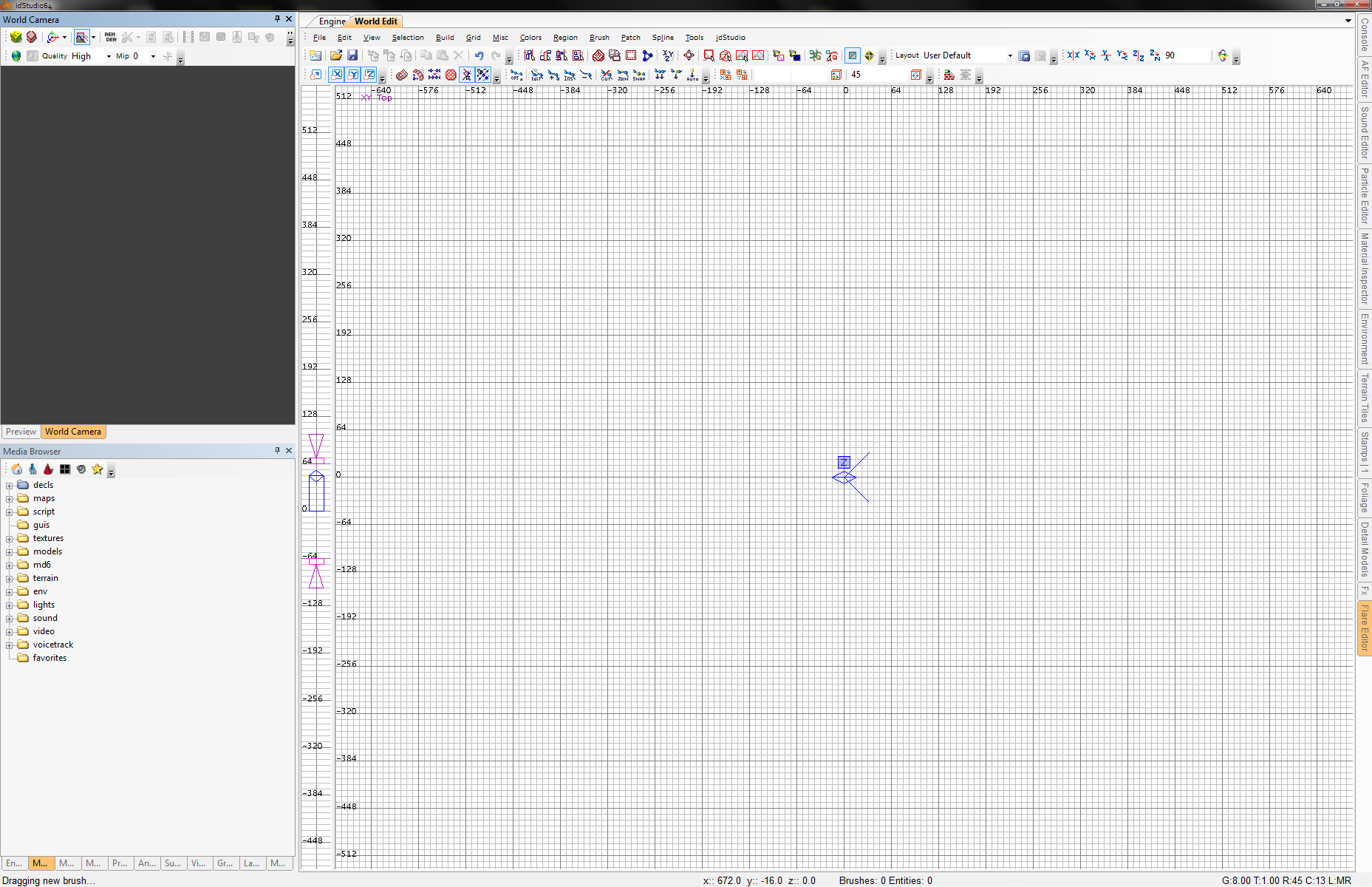idStudio Interface
When you first open the idStudio Editor, you will see three main panes—the World Editor itself, the World Camera, and the Media Browser.
Along the top of the World Editor, you will see the Main Menu and a plethora of button shortcuts. The tabs you see along the right edge of the editor, and underneath the Media Browser Window, host each of the Tools Windows, Browsers, and other windows for the editor.
More information for these elements can be found on the Toolbars and Browsers and Tools Windows pages.

overview
World Editor
Where all of the magic happens. The World Editor is your very own world construction tool.
Engine
The Engine View Tools Window in idStudio acts as an instance of the game and reflects any changes in the World Editor.
Preview Window
The Preview Window allows you to preview files such Stamps, Tiles, Textures, Materials, Particle Systems, Models, and Sounds that you are browsing.
Menu and Toolbars
See Toolbars page.
Coordinate System
1. Coordinate System
idTech 5 uses a standard right-handed (X,Y,Z) coordinate system. The coordinate system being "right-handed" means that if you stretch your right hand, point your thumb up, keep your index finger straight and rotate your middle finger 90 degrees to the left, then your index finger points down the positive X-axis, your middle finger down the positive Y-axis, and your thumb points in the same direction as the positive Z-axis.
2. Level Editor
The Radiant level editor provides, among other views, three 2D projections of the world. A top-down view, a front view and a side view.
The naming of "front" and "side" is somewhat confusing because it is different from the "front" and "side" of animated models created for idTech 5.
3. Models
Static models can be created to face any direction and can be oriented appropriately when placed in the game. However, animated models must always be created such that in-game, from the perspective of the model, the positive X-axis is forward, the positive Y-axis is left and the positive Z-axis is up. Generally, all models that are programmatically moved through the game should use this convention.
In other words, when looking at the front of an animated model with identity orientation in the game, you see the Y-Z plane and when looking at the side of a model you see the X-Z plane.
